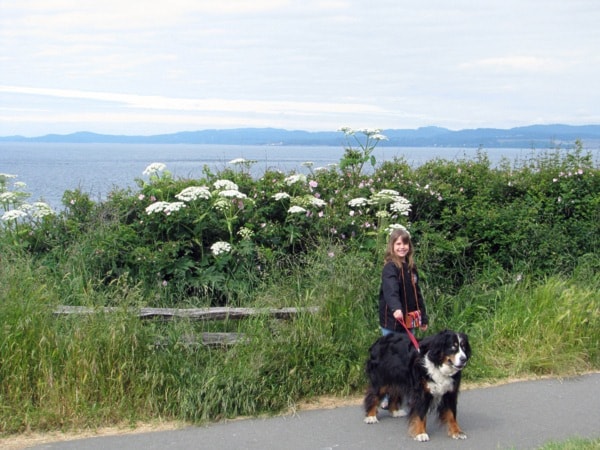Dear editor,
Please note that the photo caption that appeared with the August 11 article "Toxic hogweed plant found in Courtenay" was inaccurate. The photo caption read: Shelby and Molly pause in front of some giant, and highly toxic, hogweeds in Victoria.
The plant shown in this photo is the native species known as cow parsnip, Heraculeum lanatum (formerly H. maximum) — not giant hogweed, Heraculeum mantegazzianum.
Although the two species are very similar in appearance and both contain chemicals in their sap that make skin sensitive to sunlight, cow parsnip contains only a small amount of these chemicals. Burns from cow parsnip are rare and seldom serious, compared to the severe burns caused by giant hogweed.
The physical difference between cow parsnip and giant hogweed is their size. Cow parsnip grows 1.5 to 2.5 metres tall with leaves .5 metres in diameter. Giant hogweed grows taller, between 3 and 5 metres in height, with leaves up to one metre in diameter.
To avoid confusion among the public about the plants growing along Dallas Road in Victoria, we request a correction be issued in the Comox Valley Record.
Michelle Harris,
Victoria
Editor's note: Michelle Harris is the communications co-ordinator for the City of Victoria.
The article to which she refers was a Duchess of Dirt gardening column written by Leslie Cox, whose response follows.
"Size is the true key in identifying whether a plant is cow parsnip or giant hogweed. My mistake in not making the size distinction clearer between the two in my column.
While the former is less harmful than the latter, it should be emphasized that cow parsnip can indeed cause a painful photosensitive reaction in some people — as can the parsnips we grow in our gardens. Education is still key and one of my mandates for my Duchess of Dirt column is to inform. My apologies for getting the plant species mixed up in my photo."
